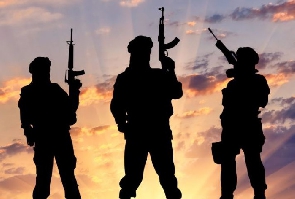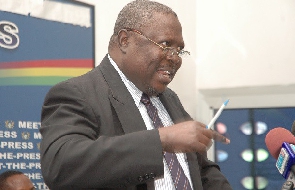Terrorism has repeatedly occurred in areas where a sense of complacency led to lapses in awareness. In May 2022, while I was on peace support operations in Somalia, Al-Shabaab, the infamous terrorist group in East Africa attacked a military Forward Operating Base (FOB) and killed a number of Burundian soldiers in Somalia.
Even though official accounts withheld details on the attack, stories that went around suggested that the extremist group exploited a moment of complacency, striking the FOB after a Friday night gathering when the military personnel may have let their guards down. In effect, the numerous instances of terrorism resulting from complacency and a lack of vigilance cannot be underestimated.
Thus, a few years ago, the initiative by the National security to sensitize citizens on terrorism awareness was commendable when the “See something, say something” mantra was introduced, albeit, with its uncertainty and ambiguity.
Critical Issues
Terrorism thrives on fear. Hence, Peter Krause and co, were right when they observed, “If terrorists’ central strategy is to inspire fear, then, education is the antidote to inspire calm and resilience.” The authors posit that by learning extensively about terrorism’s causes, strategies and effects in a dispassionate environment that separates fear from knowledge—rather than from emotional media accounts—people find that the unknown and scary become known and categorized.
For example, a person may initially fear a medical diagnosis, but as they continue to learn about the condition and its treatment, the procedure becomes less frightening. This is why in this write-up, I have sought to highlight the need for continual public education on terrorism, whilst calling on relevant stakeholders to revamp the sensitization and awareness campaign, especially, as we go into election 2024.
This is particularly necessary because many scholars have espoused, quite clearly that elections present some vulnerabilities to violent and extremist attacks due to large gatherings, high-profile targets and its symbolic value (attack on democracy).
See something, say something: what should people look out for?
Terrorism activities require a certain level of knowledge and understanding to detect, which many citizens unfortunately lack, making it essential to educate and empower them to recognize and report suspicious activities. For example, many have the impression that terrorists come from a specific region or religion and they show up in a particular style of dressing.
Again, while it’s true that some terrorists may fit a particular profile, such as being uneducated or ostracized, relying solely on these stereotypes can be misleading and dangerous, as people can overlook potential threats from unexpected sources.
In my opinion, to effectively recognize terrorism-related activities, it will be crucial for individuals to understand the psychological motivations and drivers behind such acts, including the ideological beliefs, behavioural patterns, deployment tactics of terrorists, basic signs or indicators of terrorist activities among others. This will empower individuals to “see”, subsequently enabling them to serve as effective lookouts against potential threats, and thereby contributing to the disruption of terrorist plots especially, as we go into election 2024.
In his work entitled, Understanding the Terrorist Mind-Set, Randy Borum posits that “if people understand their opponents’ maps, it becomes easier to understand and to anticipate their actions” This significantly affirms that the members of the public could better foresee the actions of terrorists, predict their moves, and prepare effective counter-measures given the requisite awareness and sensitization.
A culture of security awareness
Generally, many Ghanaians are not security conscious. In this regard, citizens must constantly be reminded and encouraged to prioritize security awareness and cultivate a culture that values safety and vigilance. The presence of the unknown in familiar surroundings should always spark our curiosity and heighten our sense of security.
For example, the presence of a suspicious package in a public area, a strange symbol appearing on a building or wall in public places, an unfamiliar flag or banner hung in a public space, a sudden change in landscape or vegetation in a familiar area are few visual cues that can indicate potential security threats or concerns.
By recognizing and responding to these unknown elements in familiar environments, we can enhance our security awareness and help prevent potential threats.
Opinions of Thursday, 13 June 2024
Columnist: Inspector Akwasi Ofori



















